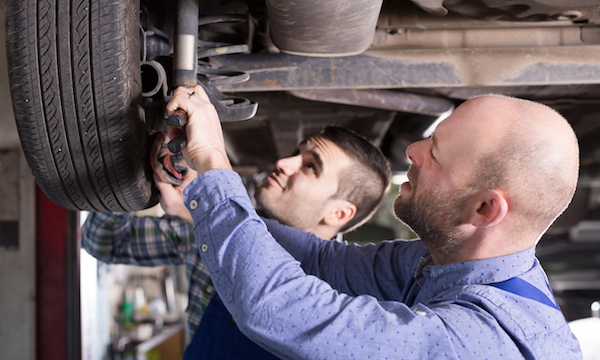You are viewing our site as a Broker, Switch Your View:
Agent | Broker Reset Filters to Default Back to ListAre Car Repairs Tax Deductible? Writing Off Auto Repairs
March 28 2017

Are car repairs tax deductible? Yes, if you use your car for business, but there are some rules and specifics to know.
When Are Car Repairs Tax Deductible?
The actual expense method allows you to write off many costs. This includes business driving costs, car repairs and car improvements. You add these costs to your other annual expenses.
If you use the standard mileage rate, you get no deduction for repairs. These are already factored into the standard rate (53.5 cents per business mile in 2017).
With the actual expense method, you may only deduct your business use percentage of your car repairs and improvements. If you drive your car 50 percent of the time for business, you can deduct 50 percent of the repair costs. The remaining costs is a non-deductible personal expense. You may deduct the cost of parts and depreciate the cost of tools if you fix the car yourself. But, there's no deduction for your labor.
Many of the expenses you incur to keep your car running are currently deductible—that is, the full amount can be deducted in the year incurred. Yet, some must be depreciated over at least five years. It all depends on whether the expense is for:
- A repair
- An improvement.
What Car Repairs Are Tax Deductible?
A repair doesn't make the vehicle better than it was in the past. In other words, a repair doesn't rise to the level of an improvement as described below. Repairs generally consist of minor fix-ups. One example is fixing a tail light.
Car repairs are currently deductible in full the year they're made. A repair keeps your vehicle in efficient operating condition. Routine car maintenance is also currently deductible. For example, changing the oil, replacing air filters, installing new windshield wipers.
What Car Improvements Are Tax Deductible?
Unlike repairs, improvements to your business vehicle are not currently deductible business expenses. Instead, you must depreciate these costs over at least five years, often longer.
How do you tell the difference between a repair and an improvement? It can be difficult.
An expense is for an improvement if it:
- Materially adds to the value of the property involved
- Adapts the property to a new or different use, or
- Substantially prolongs its useful life.
IRS regulations provide that improvements include:
- Curing a "material condition or defect" in a vehicle that existed before it was acquired or when it was produced
- A "material addition" to a vehicle—for example, physically enlarging or expanding it
- A material increase in a vehicle's capacity, productivity, strength, or quality
- Replacing a major component or part
- Rebuilding a vehicle to like-new condition after it has fallen into disrepair
- Rebuilding a vehicle to like-new condition after you've used it in your business for over five years.
The same rules apply to depreciating improvements as for regular auto depreciation. Depreciation of the original automobile and the later improvements are combined for purposes of the annual depreciation limits.
Under these limits, for example, you can only depreciate a total of $3,160 for a passenger automobile placed in service in your business in 2014. This includes the original car and any improvement you make that year. Because of the annual depreciation limits, it can take many years to fully depreciate a passenger automobile.
To view the original article, visit the MileIQ blog.









